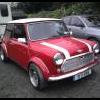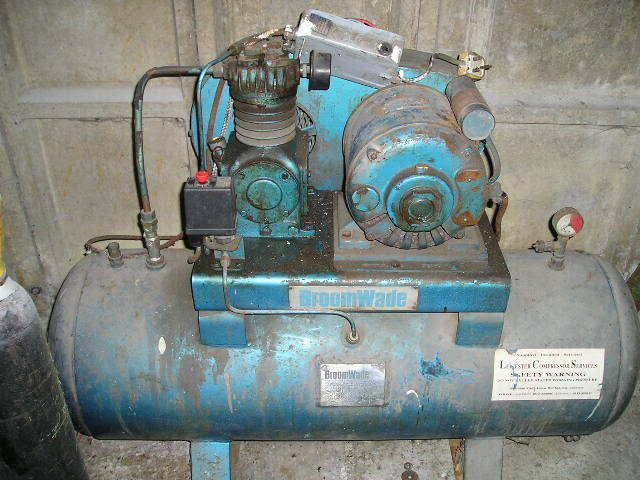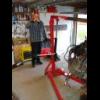I was a 16th edition electrification one of many qualifications require in M and E as a compressed air engineer (not in that game now) - some electricians insist on arguing this (I have had one argue a brand new motor was had it (kept tripping) before we put a huge circuit braker in just to prove the point (dangerous) it's (START UP SURGE) They often do not understand what is happening mechanically that influences the electrical side and it takes a good meter to pick up a voltage spike and the hold the value as it happens quicker than you can blink. This is not the answer just proved the motor was not at fault was the supply.
A compressor will pull a big load when it first starts - common sense - some more than others (That's why most industrial stuff is now variable speed, massive money savings running a huge motor at lower RPM when less air is required rather than running a motor flat out but opening and shutting an intake valve = on/off load then shutting down on a timer and drawing loads of current on start up. Digressed a bit into big industrial screw compressors then.
Anyway - raising fuse ratings or plugs to compensate is a dangerous game. The circuit breaker will still hold in while significant damage occurs during a fault and compressors do eventually burn out motors. A 13 amp cable with 32 amp breaker is not advisable (although a lot of slightly bigger domestic compressors still require 16amp - basically it's boils down to the hp of the motor- but a compressor should run at the amps stated - It will pull more on start up but not more than the max amps. I can not remember the max hp any more but it's not much more than 1.5HP. I could usually physically tell buy the size of a motor or the size of the tank or pump.
The correct way used to be to fit a type D motor rated circuit breaker. Which will allow a machine to pull a bigger load /or delay for surge on start up (can not remember the exact details) It will still protect it at the correct amps under normal running conditions - is actually listed in the install notes in some manuals definitely HPC and Ingersoll rand[/b]
Things have moved on a bit now a lot of bigger machines are now variable speed - I'm talking the size of a fridge freeze to the size of a single garage.
Some smaller portable piston compressors have a capacitor or two to bump start the motor but some times the valve between the head and the receiver/tank (rubber disc /non -return valve is leaking) The noise you would hear on start up - Which sound like leaking air (hissing as the piston goes up and down) "that's normal" - but if it's doing that all the time it's running. Means when she kicks back in with air in the tank the motor is working against compressed air - it should work a bit like a decompression lever on a four stroke single motor cycle. Although it would also mean it struggles to make pressure from an empty tank. All compressors have a form of non return valve to stop the motor starting loaded
All will cause tripping. Unfortunately a lot of companies staff are not properly trained to fix some machinery - nor are a lot of smaller compressor companies. I've seen small companies employ guys with no experience. It's actually very very involved when you get into the really big stuff (very expensive and dangerous) hence years of training.
Boring I know.. well it's nice to know something even if the basics are almost forgotten.
Hope that makes sense and not to confusing is easy to misunderstand random ramblings
How about S155 steel or T6 steel for drive shafts?? trying to suss out metal properties at the minute
Edited by NEW GUY, 23 November 2010 - 09:47 PM.


















